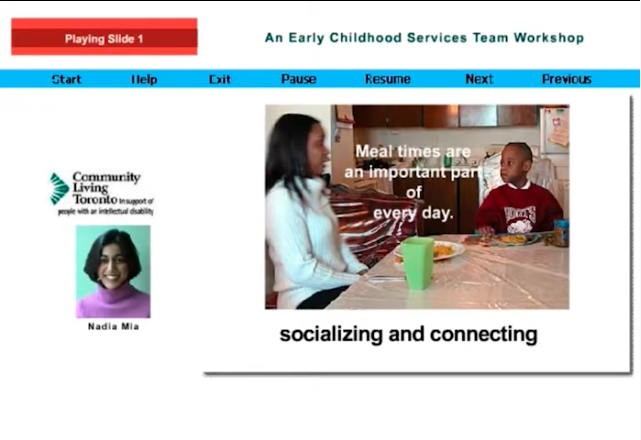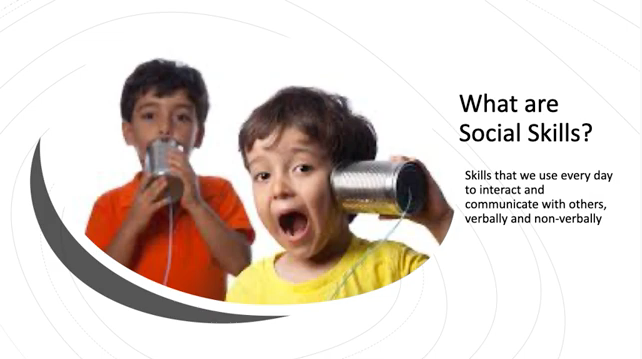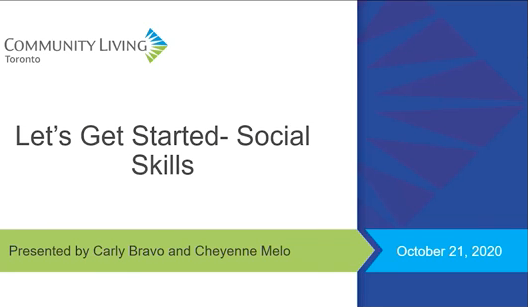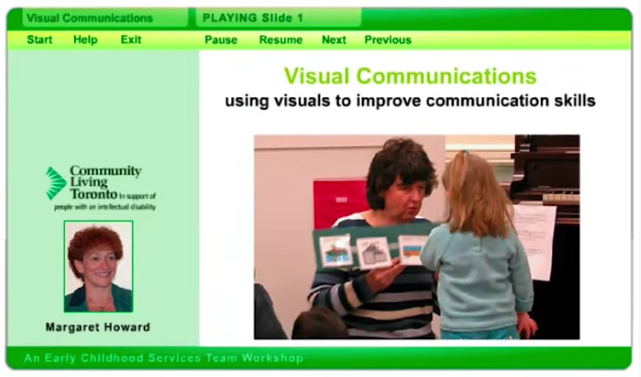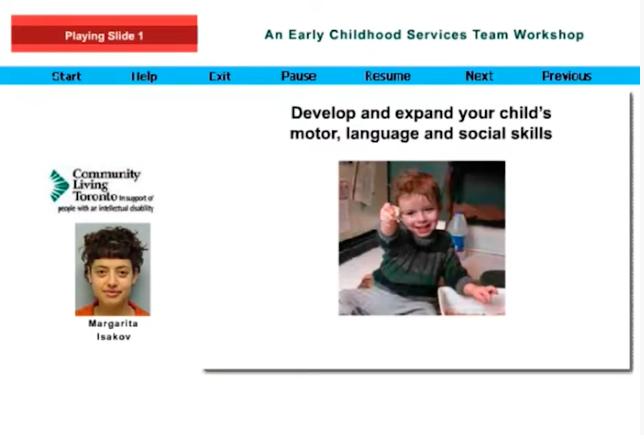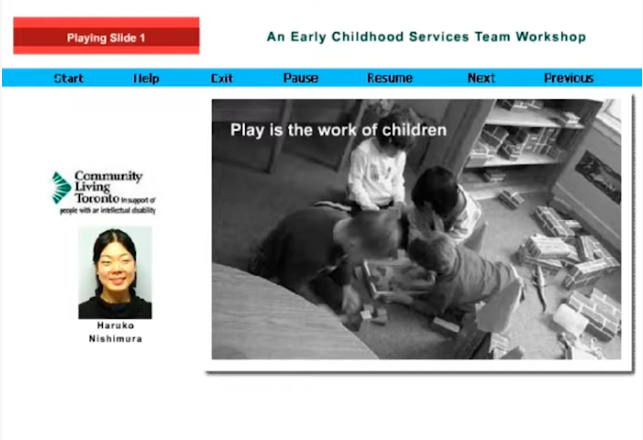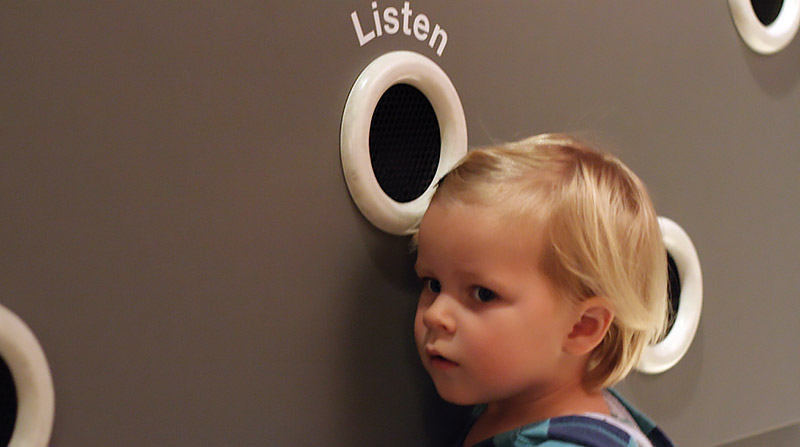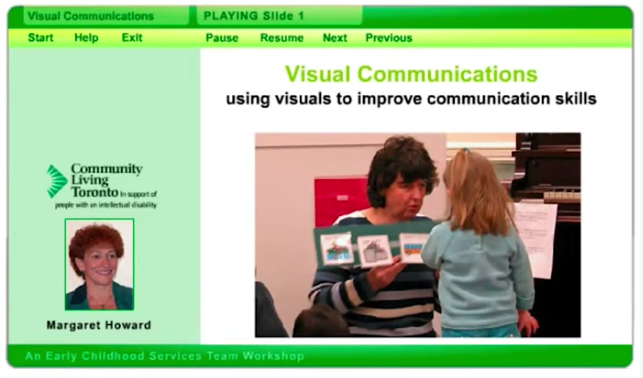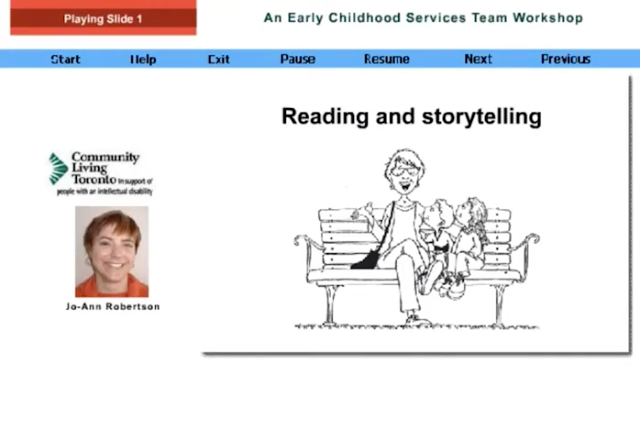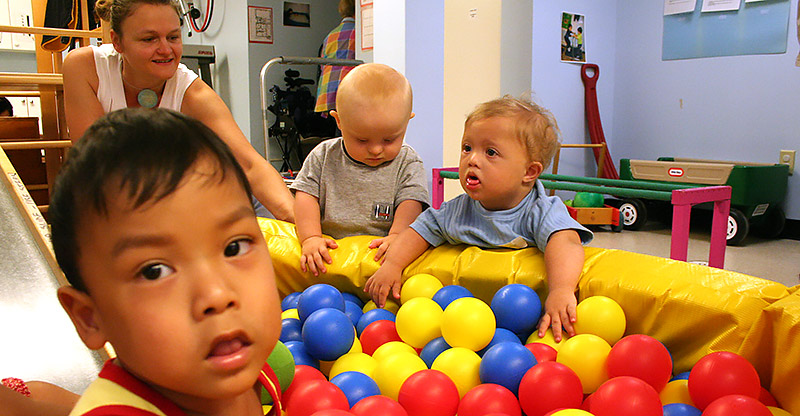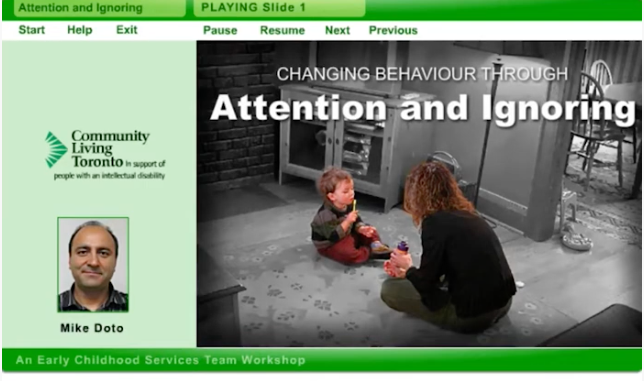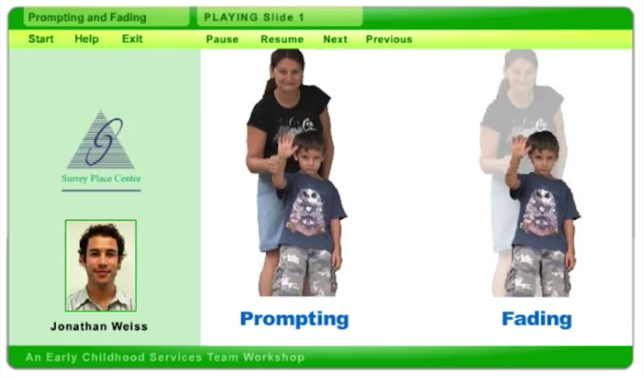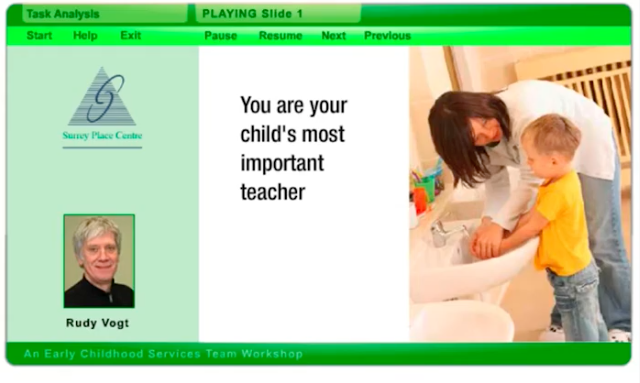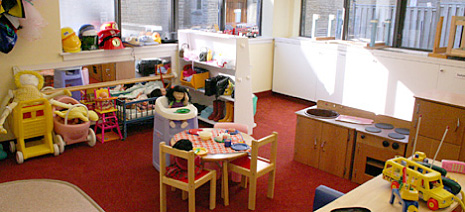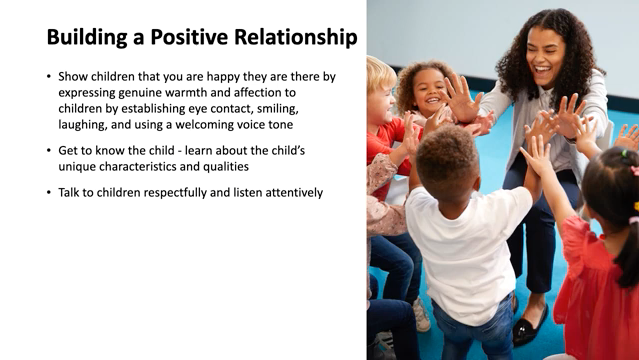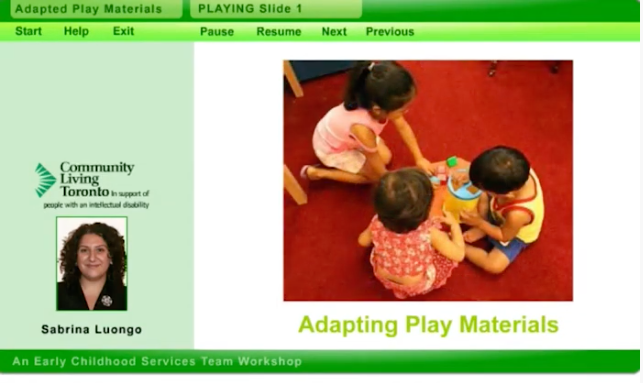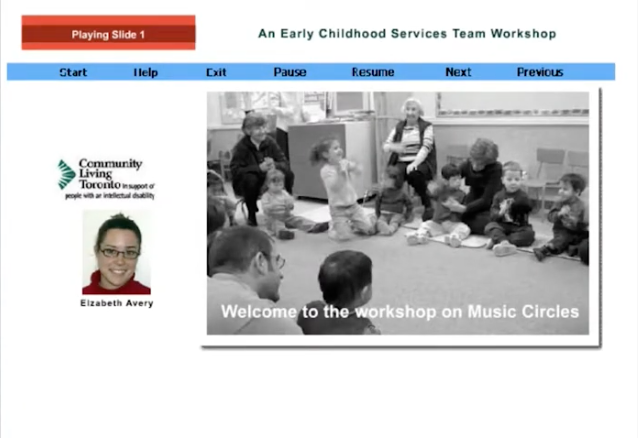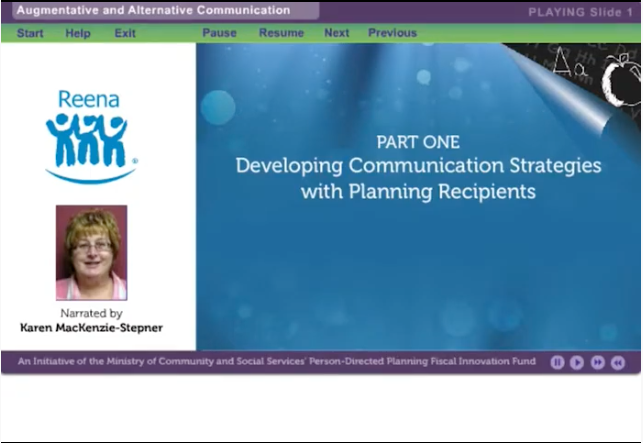As your child grows they will learn to do more and more for themselves. The road to greater independence takes time and lots of practise but leads to many successes.
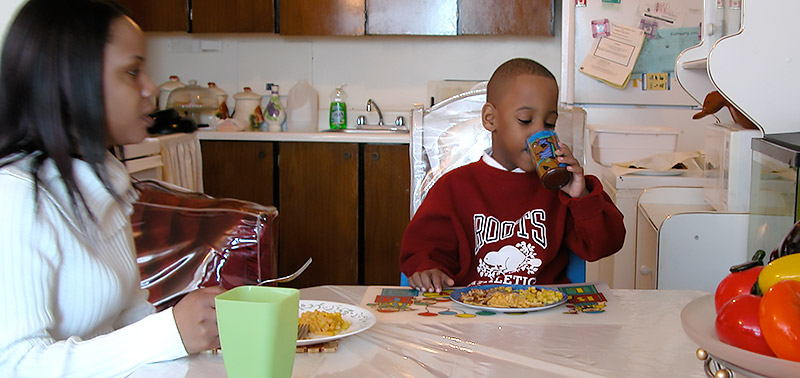
In this section you’ll find the tools to build your child’s self care skills during the daily routines, such as mealtime, dressing, washroom and sleep. Skills that once learned will be used for a lifetime.
Sitting and eating
Eating together with the family, with a group of friends or in a restaurant are more important steps in your child’s learning. Mealtime is not only an opportunity for socializing and connecting, but a chance for building independence skills. We’ll help you take a closer look at your child’s eating habits and give you some tools to make mealtime routines successful at home and in the community.
Take a look at the Mealtime Routines workshop to learn how to establish positive routines around mealtime.
Getting dressed
From putting on pants and a jacket to using zippers, buttons and laces, dressing skills are important steps on the road to your child’s independence. In this section we will help you to break down skills into simple steps and give you the tools to make teaching easier.
Using the washroom
Learning to use the toilet can be one of the most challenging and rewarding of all independence skills. We’ll help you to recognize the signs of toileting readiness and give you some pre-toilet training ideas. Once your child is ready for toilet training we’ve got the tools to help you teach, schedule and monitor their progress and strategies to use when setbacks happen. We’ll help you to think about ways to make toilet training a positive experience!
In this section, you’ll also find tips about teaching your child to wash their hands and brush their teeth. It takes a lot of practise and commitment from everyone spending time with your child to help them learn and be independent.
Sleeptime
Young children often need help getting to bed and staying asleep. As your child grows it is important for them to develop good sleep habits which will help them to feel better and ready to learn throughout the day.
In this section, we’ll give you the tools to help you establish a consistent routine around sleep time.

